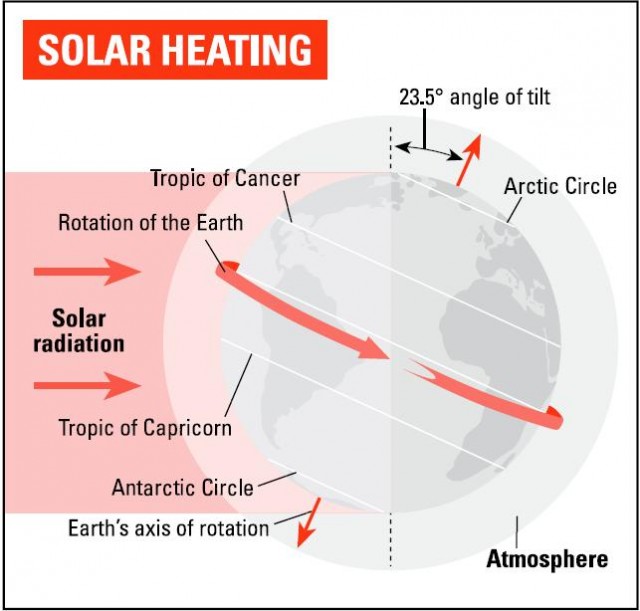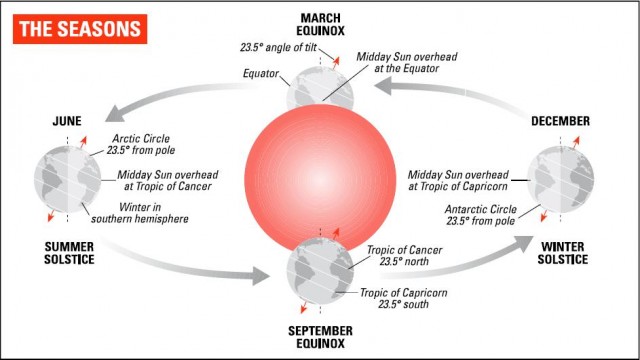The Earth in space: The seasons
From our point of view, the Suns main purpose is to keep us warm. The Earth receives energy from the Sun at a rate of about 340 watts for every square metre of its surface, mostly in the form of heat or light. Of this energy, 30 percent is reflected away at once, and the rest is eventually radiated back by the sea, the land and clouds. If the amount leaving did not match the amount arriving, the Earth would either cool down or heat up.
The warmth the Sun provides is not equally distributed around the globe. Instead, we have the phenomenon of the seasons. They arise because the Earths orbit around the Sun is at an angle – about 23.5° – to the Equator. (That is why the Equator on a globe of the Earth is tilted at this angle to the horizontal.)

The result is that in addition to moving across the sky from east to west each day as the Earth spins on its axis, the Sun moves from north to south in the sky over the course of a year, northwards during the northern summer, and south during the northern winter. This explains why summer is hotter than winter. If the Sun is higher in the sky, its heat is shining down on the Earth below more steeply. The effect is like shining a torch at a wall. If you shine it straight at the wall, the light is brighter than if you shine it at an angle because the same amount of energy is hitting a smaller area. In addition, the nearer the Sun is to your latitude on Earth, the more time it spends above the horizon and the longer the day becomes. (See www.cru.uea.ac.uk/~timo/sunclock.htm – a handy website that shows a sunclock, giving the Suns position above the Earth in real time. Its much more fun than it sounds.)

Things are further complicated by the fact that the Earths orbit around the Sun is not an exact circle. Like all planetary orbits – as Johannes Kepler pointed out in 1609 – it is an ellipse, differing from exact circularity by about 1.7 percent. As Kepler also showed, the nearer a planet is to the Sun, the faster it moves. (The same applies to other objects in the solar system: comets that dawdle along at a snails pace for thousands of years beyond the orbit of Pluto move about 100 times as fast as Concorde at full tilt when they arrive in the inner solar system.) In the Earths case, we are closest to the Sun on about 4 January, a month after midsummer in the southern hemisphere. This means that the southern summer is hotter, with about 3 percent more solar energy arriving at its peak than when the Earth is furthest from the Sun. But because the Earth is moving faster in its orbit at that time of year, it is also a few days shorter. For those of us in the northern hemisphere, this effect makes the winters shorter and milder.